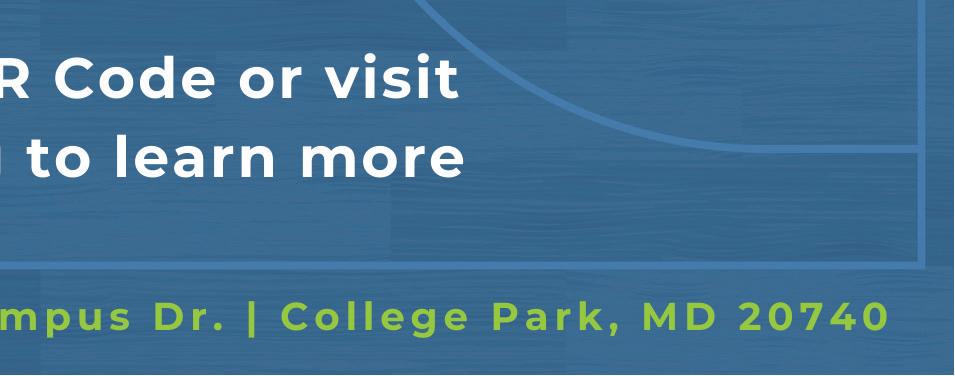

VIRTUAL CITY
COUNCIL: A return to in-person meetings should be more urgent, P. 2
NOT QUITE
NEIGHBORS: Read a summary about the city’s unhoused residents, P. 3



VIRTUAL CITY
COUNCIL: A return to in-person meetings should be more urgent, P. 2
NOT QUITE
NEIGHBORS: Read a summary about the city’s unhoused residents, P. 3
On Feb. 25, the search and rescue team carried the first victim out into the lobby of 7915 Anchor Street in Landover, then went back into the rear to look for other survivors. Delores Taylor, of the medical team, asked the thin older man, “Sir, do you know what happened?
Are you hurt?”
“After the roof caved in, a cabinet fell on me,” he moaned. “I can’t move this arm. It hurts really bad.”
“I’m a doctor,” said Linda Green. “Is it OK for me to check you out?”
“OK.”
After finding no head or neck injuries, Green discovered a rectangular 2-inch bulge near the victim’s left wrist. As Taylor gently rolled back his longsleeved shirt, Green warned,

Artificial turf fields may seem desirable for a faster sports game and for easier and cheaper upkeep, but critics argue that the increased chemical exposure, pollution and injuries they create are often overlooked.
Nearly seven years ago, Northwestern High School athletes started playing on a turf football field. More recently, in 2023, the new
Hyattsville Middle School had a synthetic soccer field installed. Many community members have voiced their continuing concerns about artificial turf on local listservs.
“I live across the street from the new Middle School field and on hot summer days, the smell of hot rubber was sometimes overwhelming and forced me to close windows and doors when I didn’t want to,” noted a Hyattsville resident on the HOPE (Hyattsville Organization
for a Positive Environment) listserv this past fall.
Keystone Sports Construction holds a maintenance contract with nine public high schools in Prince George’s County, including Northwestern High School. According to Keystone Mid Atlantic Sales Manager Tim Fitzgerald, natural grass fields require more costly maintenance and are less durable than artificial turf fields; grass fields need to be cut, watered and fertilized. He added that artificial turf fields save schools money because they are never out of commission during bad weather.
“This could be a compound fracture.”
“No,” Taylor laughed. “It’s two granola bars.”
“Yeah,” the victim replied. “These exercises take a long time, so I always bring some snacks.”
This simulated emergency came at the end of a twoday Community Emergency Response Team (CERT) basic training, sponsored by the Prince George’s County Office of Emergency Management (OEM). Green, a retired physician, is a member of the Mount Rainier CERT team. It has been in operation since March 2017, and its members have participated in several other trainings, including “Stop the bleed,” directing traffic, and using Narcan to help reverse drug overdoses.
Taylor was one of three
Findings in an audit of Prince George’s County Public Schools (PGCPS), presented in a Feb. 22 school board meeting, showed that the district has a number of busing issues to address in the upcoming school year.
The PGCPS Board of Education met at the end of February, in Upper Marlboro, to discuss the budget proposal for fiscal year (FY) 2025. Superintendent Millard House II introduced the proposal last Dec. 18, calling
for a total of $2.835 billion in spending on items like student mental health services, food services and capital outlay. This SEE
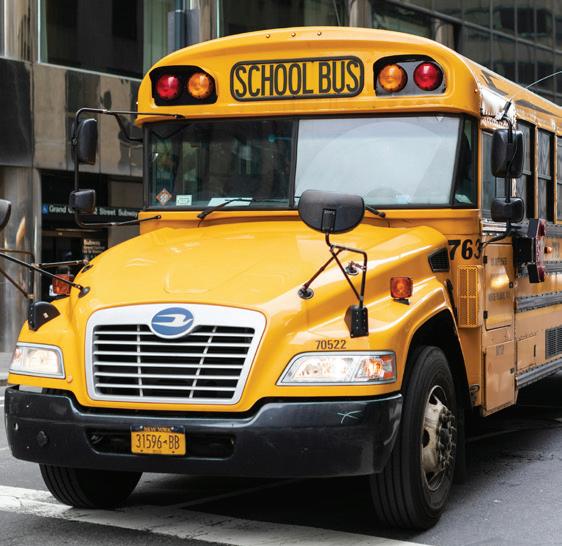

FROM THE EDITOR
There’s a moment during the Feb. 20 city council meeting — the most recent one, as of the writing of this editorial — when City Clerk Laura Reams asks if any individuals present in the audience would like to address the mayor or council. The motion comes at the start of the meeting, soon after a roll call of disembodied voices, missing microphones, and text messages declaring “Here.” It comes after a pledge of allegiance that is, at no individual’s fault, farcical, a product of Zoom, where the camera — not programmed to allow for more than one speaker at a time — flickers erratically among the councilmembers, searching for the loudest voice, for the person who is supposed to be talking. Reams herself isn’t on camera because she needs to screenshare the two-minute speaking timer. She asks audience members who have a public comment to use the Raise Hand feature at the bottom of the screen. It is a moment for the people, for the citizens of Hyattsville, to engage with their government. To list grievances. Raise concerns. Yell. Applaud. Something. Yet no one speaks. There is only the silence of the screen, reinforced by the frozen timer. If an audience exists, the viewer isn’t aware. The city council meeting proceeds, seemingly for its own sake.
Aside from a Feb. 26 budget work session at the Hyattsville Municipal Building Multipurpose Room, the Hyattsville City Council has not met in person since March 2, 2020. In those four years, Magruder Park has been renamed Driskell Community

A
PO Box 132, Hyattsville, MD 20781
http://facebook.com/ HyattsvilleLife
http://twitter.com/HvilleTimes
Hyattsville Life & Times is published monthly
501(c) (3)

Noticeably absent from those public comments were the faces of the citizens providing them. Video is disabled for participants during the Zoom meetings. The council doesn’t see constituents, much less feel their presence.
Park. David Driskell himself, for whom the park would be named, passed away from complications due to COVID-19. Hyattsville Middle School was designed and built from scratch by the county with input from the city.
And yet, throughout these transformative events, the people of Hyattsville have not shared a room with their government, have not been able to observe more than one councilmember at the same time (if they can observe them at all; some cameras remain off), have not gripped the wood of the speaking podium and made their presence more difficult to dismiss than with the brief click of a mute button.
When asked, Reams — who is also director of the city’s Communications and Legislative Services — said the council chambers are being disassembled to make room for audiovisual equipment
Managing Editor
Griffin Limerick griffin@streetcarsuburbs.news
Associate Editor
Heather Wright heather@hyattsvillelife.com
Layout & Design Editors
Ashley Perks, Valerie Morris
Streetcar Suburbs Webmaster
Jessica Burshtynskyy jessica@hyattsvillelife.com
Columnists
Imke Ahlf-Wien, Jessica Arends, Rick Borchelt, Victoria Boucher, Juliette Fradin, Paul Ruffins, Heather Marléne Zadig
Writers & Contributors
Jess Daninhirsch, Lillian Howard, Katelynn Winebrenner
Advertising
advertising@hyattsvillelife.com
StreetcarSuburbs.News
301.531.5234
Business Manager
Catie Currie catie@hyattsvillelife.com
Advertising Sales Manager
Miranda Goodson
Executive Director Kit Slack
Board of Directors
President: Stephanie Stullich
Vice President & General Counsel: Michael Walls
Treasurer: Joe Murchison
Secretary: Melanie Dzwonchyk Bette Dickerson, Nora Eidelman, Joseph Gigliotti, Maxine Gross, Merrill Hartson,
Circulation:
that will allow online attendees to not merely observe, but also participate in, meetings. Previously, the chambers were “set up for video viewing only.” The council voted in June 2023 to allocate money from the city’s American Rescue Plan Act funds to transform the chambers into a hybrid space. However, no timeline has been set for finishing the project. I was told something similar by a city official six months ago. According to Reams, the city’s goal is “as soon as possible.”
“We want to make sure the technology works and meets the needs of the community,” Reams said in an email. “We do not have a firm timeline at the moment, but are currently acquiring the equipment and securing contractors to complete the Council Chambers project.”
At the core of all this is, of course, the pandemic. Out of necessity, in 2020, the meetings went online. The Maryland Open Meetings Act was revised and asterisked, with an underlying message of something like, “Even though there might be problems with audio and technical difficulties, virtual meetings don’t — at least for now — legally violate the act.” The Open Meetings Compliance Board went on to express discomfort with what a lack of internet access might portend for potential violations but stressed that — for virtual citizens upset about their inability to comment — Maryland state law only guarantees the ability to “observe” meetings. A “state of emergency” was cited, with an implicit translation of “What can we do.”
But the public health emergency has been officially over since May 11, 2023. Takoma Park went back
to in-person meetings in March 2022. Greenbelt currently meets in person, as does College Park — with an additional option to attend via Zoom. Laurel mixes it up: The first meeting of the month is held virtually, while the second is held in person.
And then there’s Hyattsville.
I don’t mean to imply that virtual council meetings aren’t beneficial. For those who can’t afford or arrange child care, or can’t make the commute downtown, or might even be indisposed due to illness, having a virtual option is genuinely helpful. Nor do I mean to portray online council meetings as always devoid of participation.
As Councilmember Joanne Waszczak (Ward 1) pointed out to me, the recent string of meetings in which rent stabilization was on the table were well attended, with a public comment section that Waszczak called “powerful.” Mayor Robert Croslin even extended comment times for those who needed translation.
But noticeably absent from those public comments were the faces of the citizens providing them. Video is disabled for participants during the Zoom meetings. The council doesn’t see constituents, much less feel their presence. Ten years ago this would have seemed dystopian: a faceless citizenry addressing a photograph of its leaders through a computer screen. National government is already something to be watched on TV between advertisements. If local government recedes behind that barrier, too, is not all government abstracted from the people?
Perhaps it’s time to reevaluate the parameters of city council meetings altogether. When discussing the drawbacks of in-person meetings, Waszczak mentioned that public buses run less frequently at 7 p.m. when meetings begin, and are even scarcer at 10 or 11 p.m. when they adjourn. These late hours can also be tough for councilmembers with full-time jobs and families. Would a possible solution, then, be to start the meetings earlier, say 5:30 or 6 p.m.? Or, rather, could we shift them to Saturdays, when more people are free? Motions have long been in place elsewhere to reschedule other democratic activities, such as voting, to weekends.
As for continued virtual participation, why not move the meetings to a temporary space where temporary cameras and
At its March 4 meeting, the city council heard, indirectly, from 64 people who live in Hyattsville — though not in houses or apartments of their own, but rather outdoors, in cars, or in other kinds of makeshift or temporary shelters.
Hyattsville commissioned a survey of unhoused residents, conducted in December 2023 and January 2024 by outreach workers from an organization called The h3 Project.
Of the 64 people interviewed, 58 were men, and 50 preferred to respond in Spanish. Roughly half said they had experienced homelessness for one year or less. Four had been unhoused for 15 or more years. Two were veterans.
Twelve of those interviewed were originally from Maryland, whereas 22 said they arrived with the help of a “coyote,” a Spanish term for someone who smuggles people across borders illegally. Most said they wished to remain in Hyattsville because of local family and friends.
Outreach workers asked about causes of homelessness: Thirty-six cited financial crisis, 33 mentioned family members or relationship fallout and 19 mentioned addiction.
Only seven of those interviewed had a case manager. None were receiving social security benefits, though some worked
as day laborers. All but one expressed interest in employment.
Outreach workers asked about favorite pastimes. Soccer was mentioned most often, according to Amy Angell, the founder and director of The h3 Project, who presented the survey results during the council meeting.
Angell said outreach workers found two minors, ages 4 and 17, living with unhoused parents.
Survey participants received $10 gift cards, with the majority selecting gift cards to McDonald’s, according to Angell.
After much anticipation, the German grocery chain Lidl opened its Chillum location on Valentine’s Day. Opening day saw special deals, as well as gift cards for the first 100 customers.
The new Lidl is situated in the former location of Price Rite, at 3104 Queens Chapel Road. The building has housed a variety of grocery stores over the years and was made locally famous when Queen Elizabeth II visited in 1957, when it was a Giant supermarket.
Lidl joins several other grocery stores nearby, with close competitor Aldi just down the street, Megamart just around the corner, and Bestway near Hyatt Park, as well as several smaller international
grocery stores like Bonivia and Habesha that do business in the area.
Aimee Campbell, Lidl’s director of corporate affairs, appeared confident that Lidl can stand out from the ocean of other grocery options. “We have an incredible bakery, fantastic private label products and a selection of quality international foods that you can’t find anywhere else,” she wrote in a March 4 email.
Lidl, like its nearby neighbor Aldi, is a German grocery chain well known for its affordable store brands. Lidl also has a fresh bakery section, which Aldi does not.
Megamart and Bestway accept the federal supplemental nutrition program for women, infants and children, known as WIC, according to the Maryland WIC app, while Aldi and Lidl do not. All four stores welcome Supplemental Nutrition Assistance Program, or SNAP, electronic transfer payments.
At its March 4 meeting, the Hyattsville City Council voted unanimously to enter into a contract with the Hope Center for Wellness to provide an array of free mental health services to children and youth. The city will use American Rescue Plan Act of 2021 funds, not to exceed $100,000, to pay for these services.

Council documents state that the city’s Children and Youth Mental Health Wellness Initiative aims to “offer preventive mental health methods, social-emotional workshops, educational opportunities, and counseling services at no cost for children/ youth and their families experiencing mental health challenges.” The contract is for one year “with the possibility of annual renewals not to exceed five years.”
According to its website, the Hope Center opened in 2017 and “is a multicultural and bilingual mental health practice focused on holistic healing of individuals and communities, and strengthening the programmatic and clinical skills of organizations, schools, and government agencies.” Its founder, Cheryl Aguilar, won the National Association of Social Workers Metro DC Chapter 2023 Social Worker of the Year award.
The Hope Center’s proposed annual budget for the program includes $60,000 for individual, parent-child or family therapy sessions for 25 children and youth, $25,000 for expressive interventions groups and $4,600 to provide mental health workshops. The city put out a request for proposals on Jan. 29, and the proposal submitted by the Hope Center was the only one the city received.
Hyattsville Community Services Director Sandra Shephard said in an email that the goal is for the mental health program to start by this summer.




The Washington Commanders’ move into the University of Maryland’s Discovery District could entice other companies to follow the team to College Park and the surrounding area.
In addition, the move could broaden local internship and employment opportunities.
“They’ve got a real track record of hiring interns … from the University of Maryland,” the Discovery District’s Chief Strategy Officer for Economic Development Ken Ulman said.
The three-time Super Bowl champions moved their headquarters and more than 200 employees — not the athletes, though — to the top floor of 4600 River Road in January. The university, which owns the Discovery District, had the secure, fourstory building constructed in 2020.
The Discovery District is a 150-acre research park close to the UMD campus that has largely focused on supporting university-related startups and federal agencies, including IonQ, a quantum computing company, and the Food and Drug Administration.
“As we have matured as a district, we are now starting to be seen as a goto location for companies of all types,” Ulman said. “The Commanders are a

significant business with a lot of needs for diverse talent.”
The proximity to campus, the Metro and eventually the Purple Line will make it easy for employees of the company to visit local restaurants and shops. The team also will be able to recruit future employees from the local talent pool.
On the team’s move-in day, Testudo,
the university’s mascot, welcomed employees to their new home.
“We’re really working very hard to make sure that tenants and partners in the Discovery District feel a connection to the university,” Ulman said. In the aftermath of the pandemic and the rise of hybrid work, Ulman has found that highlighting local amenities
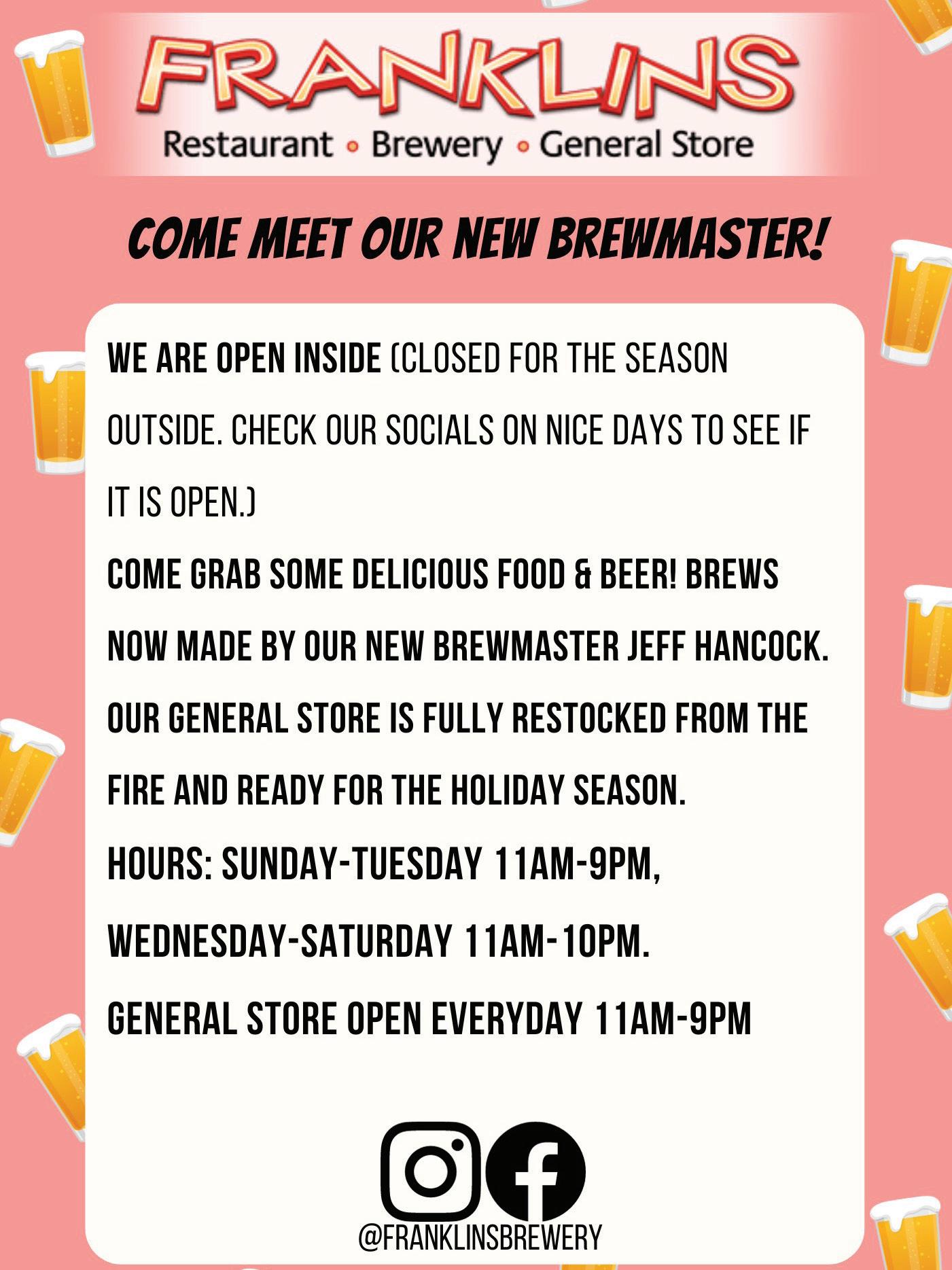
and partnerships with the university differentiates the Discovery District from competing office space.
“When people are choosing where to locate an office, it’s that much more important to offer that value proposition to make sure people feel like they’re a part of a community, not just picking one of many office buildings that somebody could choose to rent space in,” Ulman said.
Not only is the Commanders’ move beneficial for the Discovery District, but having a household name based in College Park could also be an asset for the city as a whole, according to College Park Mayor Fazlul Kabir.
“So certainly we’ll be highlighting this exciting news as we try to attract new businesses in College Park,” Kabir said.
The Commanders have operated out of their Landover stadium, formerly called FedEx Field, since the late 1990s. The team’s contract to use the stadium will end in 2027.
Speculation about where the team will move includes rumors of a return to RFK Stadium, in the District, especially as legislation to upgrade the facility makes its way through Congress. But team officials have said staying in Maryland, or moving to Virginia, are also options.
Katelynn Winebrenner is an undergraduate journalism major at the University of Maryland.
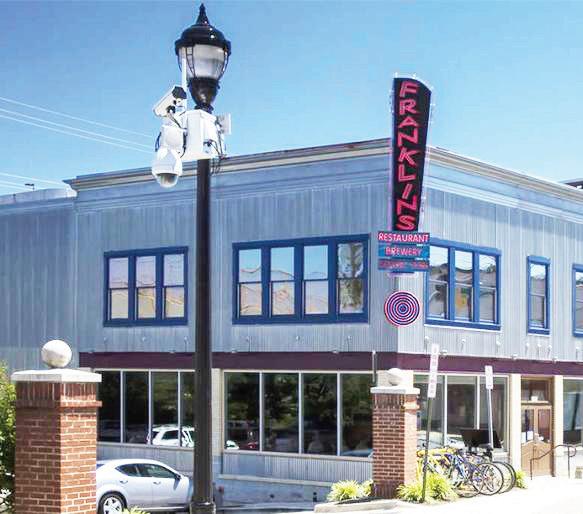
People passing by Driskell Park on the Gallatin Street side have probably seen a raised plateau of dirt, now covered in grass — but what they may not know is that that mound of dirt is part of the plan to fill in the flood plain for more building. Werrlein Properties plans to build 41 luxury townhouses on this perch above the park and adjacent to the already stressed Trumbule Bog and Northwest Branch of the Anacostia River.
According to the Prince George’s Department of Permitting, Inspections and Enforcement (DPIE), dumping dirt fill on the flood plain is enough to protect the new townhouses from flood risk, but that doesn’t take into account the expected increased rainfall in our area from climate change.
DPIE is the same agency that issued numerous stop-work orders on the first phase of building for Suffrage Point, a heavily disputed development project that includes a combination of single-family homes and townhouses still yet to be built.
DPIE and the Prince George’s Planning Board, both of which have provided approvals for the townhouse build, failed to consider and continue to ignore the realities of climate change. Federal Emergency Management Agency (FEMA) flood plain maps and risk projections relied on by these agencies are in no way up to date (sometimes relying on rainfall data from before 1980).
In addition, the 2022 Prince George’s County Climate Action Plan calls upon the county to “prioritize restoring and preserving natural resource areas” and to “stop the practice of permitting the reconfiguring of floodplain storage areas.”
So what does it mean for the 41 (yes, that many) planned townhouses? Werrlein’s stormwater management plans, its map delineating the 100-year flood plain, and its plan to mitigate the impacts of dumping acres of fill dirt in the flood plain all ignore abundant and growing evidence that climate change has been bringing and will continue to bring more severe and frequent storms.
Even if DPIE is correct, and the folks who buy townhouses can stay high and dry with this plan amid the projected increased rainfall in our area, the surrounding area will suffer. Opponents of the project, which include the City of Hyattsville, have raised the alarm with agencies about potential harm to the parkland and local infrastructure, as well as increased pollution to the already impaired Northwest Branch.
You don’t have to be an expert to know that water will run downhill from this project, and I worry about the health of our neighbors in Hyattsville, the surrounding communities living in low-lying areas, and about a decreased quality of life for the kids who need park access.
There is national momentum to stop this “fill and build” development practice that is sanctioned by the use of unrealistic FEMA maps, and which DPIE insists will protect the future occupants of the townhouses. An E&E News article, reprinted in a November 2023 Scientific American newsletter, reported that even a council ad-
Werrlein’s stormwater management plans, its map delineating the 100-year flood plain, and its plan to mitigate the impacts of dumping acres of fill dirt in the flood plain all ignore abundant and growing evidence that climate change
has been bringing and will continue to bring more severe and frequent storms.

vising FEMA spoke out against the practice, which, it said, “can create a false sense of security” for property owners and can take local communities by surprise when coping with climate impacts by “reduc[ing] the carrying capacity of the floodplain, leading to increased flood risk over time.”
The density calculation per acre for the project intensifies the problem of building in the flood plain, and it was rightfully rejected in May 2023 by the Prince George’s County District Council. Yet, in November 2023, the county planning board again approved a materially same plan from Werrlein to pack 41 townhouses on the flood plain. Emails back from 2020, obtained by a Public Information Act request, show Werrlein’s representative working to override county planning staff when they rejected Werrlein’s density calculation allowing for 41 townhouses to be built. Somehow, three years later, after guidance from the Court of Special Appeals and remand from the District Council, the planning board stuck with Werrlein’s number of 41. The density question will again be decided upon by the District Council, likely on March 11 before this publication reaches your door.
It has become increasingly clear that the Suffrage Point project was never going to consider the broader public benefit in a meaningful way, or as John Werrlein
put it in a 2018 Life & Times op-ed, provide a “sustainable and symbiotic relationship to Magruder Park [Driskell Park’s previous name] for the enjoyment of ALL Hyattsville residents.” Instead, we are facing potential damage from the project to our waterways, to existing homes in the flood plain and, of course, to the land in Hyattsville’s most precious park.
As a mom of one with another due in two months, I’m prone to napping and dreaming. We all know that developers tend to get their way, but in the meantime, I’ll be closing my eyes and imagining something better on that hill next to Driskell Park for our children and our community.
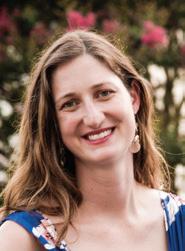
Allison Kole is a current member of the Board of Sustainable Hyattsville.
The lower parcel Suffrage Point project application is called “DSP 21001.” Technical documents, records of environmental violations, and opposition comments with supporting documentation can be found on the District Council’s website, pgccouncil.us/312/District-Council.
The views expressed in this column belong to its author. The Life & Times reserves the right to edit “From Where I Stand” submissions for brevity and clarity.
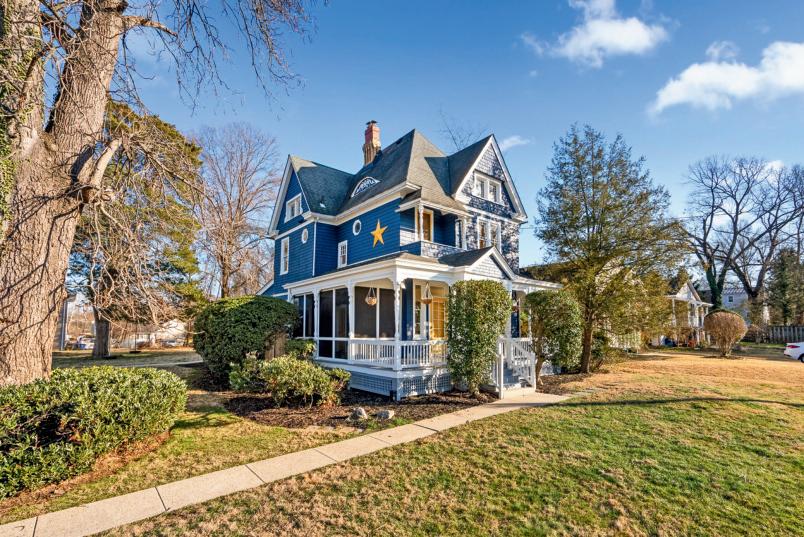





Our list of events sponsored by local nonprofits, arts organizations and performance venues, occurring between March 13 and April 9, 2024; all information is current as of March 8. For events and meetings organized by the City of Hyattsville, see the Hyattsville Reporter in the newspaper’s centerfold. Please send notices of events that will take place between April 10 and May 7 to managingeditor@ hyattsvillelife.com by April 4
RECURRING
Busboys and Poets hosts an open mic for poets every Thursday. $5. 8 to 10 p.m. 5331 Baltimore Ave. 301.779.2787. busboysandpoets.com
Weekly acoustic blues jams, in the Piedmont blues tradition. Listeners welcome! Free. Saturdays, 1 to 5 p.m. Archie Edwards Blues Foundation, 4502 Hamilton St. acousticblues.com
Sharpen your drawing skills in a relaxed, informal setting at Hyattsville figure drawing group’s drop-in drawing sessions at Pyramid Atlantic Art Center. Sessions consist of several short warm-up poses and a single sustained pose for the duration of the
session. Bring your own art supplies; drawing boards and chairs provided. $20/session or $75/5-session punch card or $15/session for Pyramid Atlantic members. Tuesdays, 6 to 9 p.m. 4218 Gallatin St. hyattsvillefiguredrawing@ gmail.com
Play with, or listen to, the Hyattsville Irish Session, featuring the O’McPub Band, on the second and fourth Sunday of each month. Free. 11 a.m. to 2 p.m. Maryland Meadworks, 4700 Rhode Island Ave., Suite Bee. 201.955.9644. marylandmeadworks.com
“Mesh,” a nationally open, juried exhibit, will be on view from March 25 to April 28. While not excluding traditional screen printing, the exhibition encourages all work that might creatively intersect — or mesh — with screen printing. Wednesday and Thursday, 10 a.m. to 8 p.m. Friday through Sunday, 10 a.m. to 6 p.m. Pyramid Atlantic Art Center, 4218 Gallatin St. pyramidatlanticartcenter.org. 301.608.9101
Come view “The Genesis Project: Volume 4,” featuring the collaborative work of Kay Lee and Becky McFall. Free. From March 25 through May 18. Monday through Friday,
10 a.m. to 7 p.m. Saturday, 10 a.m. to 4 p.m. Brentwood Arts Exchange, 3901 Rhode Island Ave., Brentwood. 301.277.2863. brentwoodarts@pgparks.com
MARCH 13
Spend an afternoon at the Hyattsville Branch Library for coffee and a screening of the classic film “12 Angry Men” (1957, 96 min.), a courtroom drama where 12 men must decide the fate of one man. Free. Register at pgcmls.info/ events. 1 to 3 p.m. 6530 Adelphi Rd. 240.455.5451
MARCH 16
The Station at Riverdale Park invites you to its first annual Sir Rulean’s St. Patty’s Day 5K Race, hosted by Cushman & Wakefield in honor of The Station’s beloved blue bear statue, Sir Rulean! A portion of the proceeds will go to the Christian Life Center to help support their community food bank. Runners and walkers are welcome! $30. Register at runsignup.com/Race/MD/ Riverdale/SirRulean5K. 8 a.m. 6621 Baltimore Avenue, Riverdale Park. 717.557.7569
MARCH 23
As part of Route 1 Corridor Conversations, join us to discuss “Our Eye on the Heavens: Discoveries with the James Webb
MARCH 23 (& MARCH 30)
Learn bird-watching basics at Birding 101 — we’ll identify major groups of birds, practice using binoculars and field guides, and figure out good beginning birding apps. Then we’ll test ourselves on March 30 at Lake Artemesia. Free, for teens and adults. Register at pgcmls.info/events. 1 to 4 p.m. Hyattsville Branch Library, 6530 Adelphi Rd. 240.455.5451
Space Telescope” with Nobel Prize-winner Dr. John C. Mather. Mather is a senior astrophysicist in the Observational Cosmology Laboratory at NASA’s Goddard Space Flight Center, in Greenbelt, and the senior project scientist on the James Webb Space Telescope. Attendees can join via telephone or Zoom. Free. 2 to 3:30 p.m. Register at hyattsvilleaginginplace.org.
MARCH 23 & 24
Syncopated Ladies: Live is a ground-breaking all-female tap production that propels beautiful and diverse women onto a reinvigorated stage, weaving their inspiring stories with intricate footwork, feminine prowess and life-renewing energy. $45 resident, $40 senior or student. Purchase tickets through pgparksdirect. com. Saturday, 8 to 9:30 p.m. Sunday, 4 to 5:30 p.m. Publick Playhouse, 5445 Landover Rd., Cheverly. 301.277.1710
MARCH 29
The Hi-Fi Groove Society, a DJ collaborative, brings its amalgam of hip hop, house and techno music to Streetcar


82 Brewing Co. Free. 7 to 9:30 p.m. 4824 Rhode Island Ave. streetcar82brewing.com
MARCH 30
Join the Egg Dyeing Eggstravaganza and celebrate the season by creating bright, beautiful and colorful eggs. Each participant will receive two eggs to paint and design at this family-friendly workshop. Free. Register through pgparksdirect.com. 2 to 4 p.m. Brentwood Arts Exchange, 3901 Rhode Island Ave., Brentwood. 301.277.2863
It’s karaoke night at Maryland Meadworks! 7 to 10 p.m. 4700 Rhode Island Ave., Suite Bee. 201.955.9644. marylandmeadworks.com
APRIL 6
Brentwood Arts Exchange is hosting opening receptions for two current exhibitions, “Road to Recovery” and “The Genesis Project: Volume 4.” Free. 5 to 8 p.m. 3901 Rhode Island Ave., Brentwood. 301.277.2863. brentwoodarts@ pgparks.com
Come to Maryland Meadworks for their Vine Crawl costumemaking party, 7 to 10 p.m. 4700 Rhode Island Ave., Suite Bee. 201.955.9644. marylandmeadworks.com
APRIL 6 & 7
Nootana, with its innovative renditions and perspectives of live Indian classical music and dance, presents its fourth annual spring showcase and original modern dance drama, “Looking Glass.” $30. Purchase tickets at joesmovement. org. Saturday, 6 p.m. Sunday, 2 p.m. Joe’s Movement Emporium, 3309 Bunker Hill Rd., Mt. Rainier. 301.699.1819
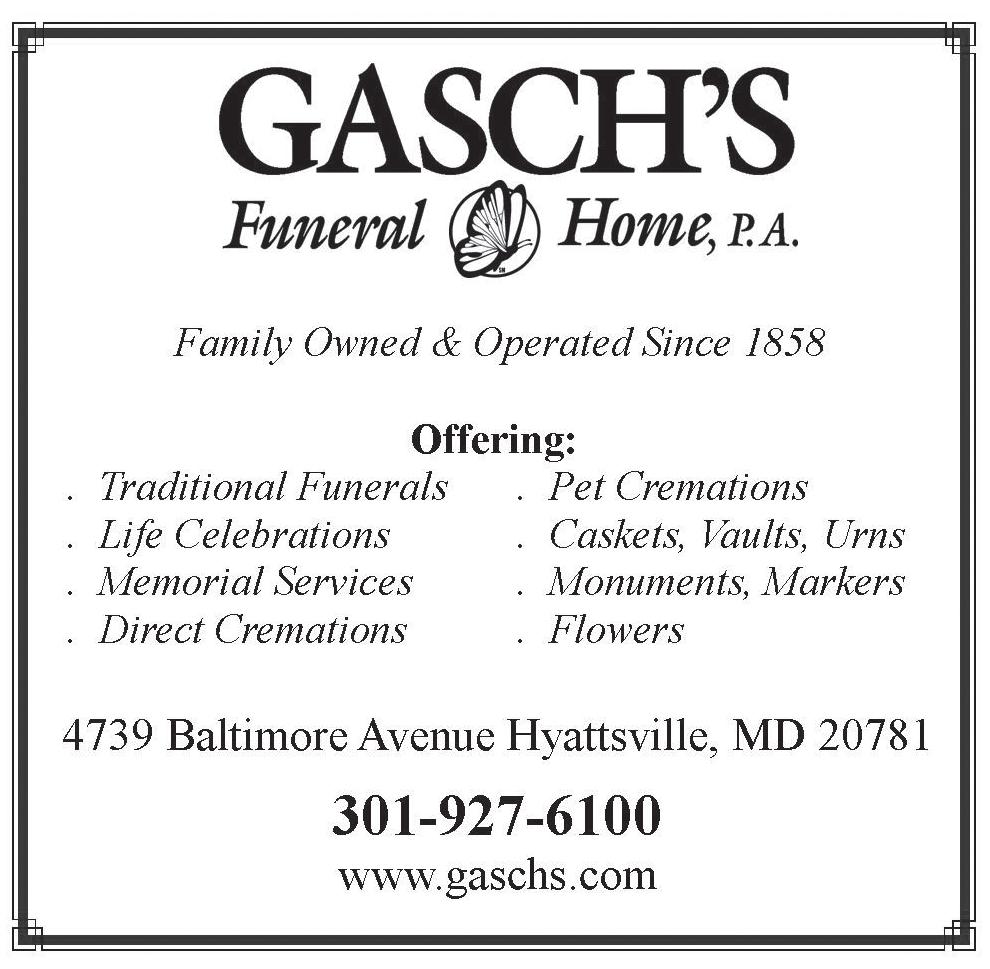
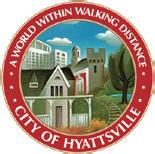
Issue 432| March 2024

I’m Sandra Shephard, Community Services Director for the City of Hyattsville. I’m excited to share updates about our spring events!
Save the date(s): Spring is around the corner, and so are some of our favorite City traditions. The City’s HVL in Bloom (formerly known as the Egg Hunt) will take place on Saturday, March 23, from 10 a.m. to noon at Driskell Park with music, spring activities, and a VIB (Very Important Bunny). Learn more at hyattsville.org/bloom.
This year is the 138th anniversary of the City’s founding— come celebrate it with friends and family on Saturday, April 20, between 4 p.m. and 9 p.m. at Driskell Park! Festivities include live music and entertainment, food and drink from local restaurants and breweries, children’s bouncy houses, and fireworks at dusk! Keep an eye out for additional details in next month’s Life & Times!
Youth Opportunities: A reminder that the applications for the Hyattsville Higher Education Scholarship program are due on March 22. Hyattsville high school seniors and graduates pursuing higher education are encouraged to apply to help cover school-related expenses like tuition and books. Find the application and eligibility requirements at hyattsville.org/education.
Applications for the Camp Coach in Training Program (CCIT) are being accepted through May 15. The CCIT program allows youth ages 14 – 17 the opportunity to gain experience with child development through our seasonal camps for future job opportunities. Learn more at hyattsville.org/cccit.
There are still limited spaces available for our seasonal and single-day camps for children in grades K-5! Check out our variety of camps at hyattsville.org/youth.
Is your little one not so little anymore? Sign them up for to participate in the Teen Center at Driskell Park, which offers drop-in hours after school, a youth leadership program, homework help, and much more. Register for a free membership at hyattsville.org/teen-center.
Older Adult Services: Our Aging and Wellness staff leads a variety of programs for Hyattsville’s older adults and individuals with a disability. From free SeniorFit+ exercise classes to monthly lunch and learn workshops there’s something for everyone! Learn about our expanded programs coming this spring on the next page.
Soy Sandra Shephard, Directora de Servicios Comunitarios de la Ciudad de Hyattsville. ¡Estoy emocionado de compartir actualizaciones sobre nuestros eventos de primavera!
Reserve la(s) Fecha(s): La primavera está a la vuelta de la esquina, al igual que algunas de nuestras tradiciones favoritas de la Ciudad. El HVL in Bloom (Anteriormente conocida como la caza del huevos) de la Ciudad se llevará a cabo el sábado, 23 de marzo de 10 a.m. al mediodía en Driskell Park con música, actividades de primavera y un conejito muy importante. Obtenga más información en hyattsville.org/bloom.
Este año es el 138.º aniversario de la fundación de la Ciudad - ¡ven a celebrarlo con amigos y la familia el sábado ,20 de abril, entre las 4 p.m. y 9 p.m. en Driskell Park! Las festividades incluyen música y entretenimiento en vivo, comida y bebidas de restaurantes y cervecerías locales, casas inflables para niños y fuegos artificiales al anochecer. ¡Esté atento a detalles adicionales en el próximo mes!
Oportunidades para Jóvenes: un recordatorio de que las solicitudes para el programa de becas de educación de Hyattsville vencen el 22 de marzo. Se anima a los estudiantes del último año de la escuela secundaria y graduados de Hyattsville que buscan estudios superiores a presentar su solicitud para ayudar a cubrir los gastos relacionados con la escuela, como la matrícula y los libros. Encuentre los requisitos de elegibilidad y solicitud en hyattsville.org/education.
Las solicitudes para el programa Camp Coach in Training (CCIT) se aceptan hasta el 15 de mayo. El programa CCIT permite a los jóvenes de 14 a 17 años la oportunidad de adquirir experiencia en el desarrollo infantil a través de nuestros campamentos de temporada para futuras oportunidades laborales. Obtenga más información en hyattsville.org/cccit.
¡Todavía hay espacios limitados disponibles para nuestros campamentos de temporada y de un solo día para niños en los grados K-5! Consulte nuestra variedad de campamentos en hyattsville.org/youth.
¿Tu pequeño ya no es tan pequeño? Inscríbalos para participar en el Centro para Jóvenes en Driskell Park, que ofrece horas de visita sin cita previa después de la escuela, un programa de liderazgo juvenil, ayuda con las tareas y mucho más. Regístre a su joven para obtener una membresía gratuita en hyattsville.org/teen-center.
Servicios para Adultos Mayores: nuestro personal de envejecimiento y bienestar dirige una variedad de programas para los adultos mayores y las personas con discapacidad de Hyattsville. Desde clases de ejercicio gratuitas hasta almuerzos y talleres de aprendizaje mensuales, ¡hay algo para todos! Conozca nuestros programas ampliados que llegarán esta primavera en la página siguiente.
NEW HEALTHY AGING PROGRAMS!
Hyattsville is Home Art Classes: Calling all artists – new, intermediate, and experienced! The City and Art Works Now are offering two Hyattsville Is Home art class series this spring, and you’re invited to participate in person or virtually! Classes are two hours in length, and all art supplies are provided (free). Community members may only register for one series:
• In-Person Classes: Tuesdays, 10 a.m. – 12 p.m., April 30June 11, at Art Works Now
• Zoom Virtual Classes: Details coming soon! Participants will need their own electronic device and internet/Wi-Fi service to join
Hyattsville Caregiver Support Group: The City will host a free bi-weekly support group for caregivers of loved ones. The 60-minute support group will provide caregivers with emotional and social support and educational materials/ resources. This group is for spouses, children, and any family members or friends caring for someone.
Join us on for an information session on Friday, April 5 from 9 a.m. to 10 a.m. at the City Building, 4310 Gallatin Street.
Digital Literacy and Instruction Classes: The City and BCauseICan are offering free digital literacy and instruction classes for adults 50 years + looking to learn basic computer skills. Two ten-week computer literacy and technology instruction sessions will be held, one in English and one in Spanish, Wednesdays from 12 p.m. – 1 p.m., from April 10 through June 12. Laptops will be made available to participants during class. Classes will be held at the City Building.
Space is limited, and registration is required to participate in the Healthy Aging Programs. Free transportation will be available for in-person events to City residents. For more information and to register for a series, please call (301) 985-5000 or email seniors@hyattsville.org.
JEFFERSON STREET & ROUTE 1 CLOSURES
WSSC will be performing emergency sewer repairs in the 4400 block of Jefferson Street from Monday, March 18 –Friday, March 22. Work will primarily take place at night, but some daytime work will be required. Repairs will require occasional full closures of Jefferson Street between 44th Avenue and Route 1. Please follow posted detour signage.
Starting the week of March 25, the westbound lane of Jefferson Street will remain closed between Route 1 and 44th Avenue during the hours of 9 a.m. – 3 p.m. Monday – Friday for work related to the Canvas Apartment Development. This work is expected to continue through August. Visit hyattsville.org/canvas for details and detour maps.
Save your trees with free vine removal services, available through the end of March! The City, in partnership with the Chesapeake Climate Action Network, has been training volunteers to safely remove invasive vines that kill or damage trees. If you live in the City of Hyattsville and need vines removed from the trees in your yard, our volunteers can help at no cost! Contact environment@hyattsville.org or call (301) 985-5032 to request a visit.
Clases de Arte de Hyattsville: Llamando a todos los artistas: ¡nuevos, intermedios y experimentados! La Ciudad y Art Works Now ofrecerán dos series de clases de arte esta primavera, ¡y estás invitado a participar en persona o virtualmente! Las clases serán de dos horas y se proporcionan todos los materiales de arte. Miembros de la comunidad sólo podrán inscribirse en una serie:
• Clases en Persona: martes, de 10 a. m. a 12 p. m., del 30 de abril al 11 de junio, en Art Works Now
• Clases Virtuales de Zoom: ¡Detalles próximamente! Los participantes necesitarán su propio dispositivo electrónico y servicio de internet/Wi-Fi para unirse
Grupo de Apoyo para Cuidadores de Hyattsville: la Ciudad organizará un grupo de apoyo gratuito para cuidadores de seres queridos. El grupo de apoyo de 60 minutos brindará a los cuidadores apoyo emocional y social y materiales/recursos educativos. Este grupo es para esposo/as, hijos y familiares o amigos que cuidan de alguien.
Únase a nosotros para una sesión informativa el viernes, 5 de abril de 9 - 10 a.m. en el Edificio Municipal, 4310 Gallatin Street.
Clases de Tecnología e Instrucción Digital: la Ciudad y BCauseICan ofrecerán clases gratuitas de tecnología e instrucción digital para adultos mayores de 50 años o más que buscan aprender habilidades informáticas básicas. Se llevarán a cabo dos sesiones de diez semanas de duración, una en inglés y otra en español, los miércoles de mediodía – 1 p.m., del 10 de abril al 12 de junio. Las computadoras estarán disponibles para los participantes durante la clase. Las clases se llevarán a cabo en el Edificio Municipal.
El espacio es limitado y es necesario registrarse para participar en los programas de envejecimiento saludable. Habrá transporte gratuito disponible para eventos en persona para los residentes de la Ciudad. Para obtener más información y registrarse para una serie, llame al (301) 985-5000 o envíe un email a seniors@ hyattsville.org.
CIERRES DE JEFFERSON STREET Y LA RUTA 1
WSSC realizará reparaciones de emergencia de alcantarillas en la cuadra 4400 de Jefferson Street empezando el lunes, 18 de marzo hasta el viernes, 22 de marzo. El trabajo se realizará principalmente por la noche, pero se requerirá trabajo durante el día ocasionalmentes. Las reparaciones requerirán cierres totales ocasionales de Jefferson Street entre 44th Avenue y Route 1. Siga las señales de desvío publicadas.
A partir de la semana del 25 de marzo, el carril en dirección oeste de Jefferson Street permanecerá cerrado entre la Ruta 1 y la 44th Avenue de 9 a.m. a 3 p.m. de lunes a viernes para trabajo relacionado con del desarrollo de los Canvas Apartment. Se espera que este trabajo continúe hasta agosto. Visite hyattsville. org/canvas para obtener detalles y mapas de desvíos.
SERVICIOS DE REMOVIMIENTO DE VIDES HASTA MARZO
Salve sus árboles con servicios gratuitos de eliminación de vides, disponibles hasta finales de marzo! La Ciudad, en asociación con Chesapeake Climate Action Network, ha estado entrenando a voluntarios para eliminar de manera segura las enredaderas que matan o dañan árboles. Si vive en la Ciudad y necesita remover enredaderas de los árboles de su jardín, ¡nuestros voluntarios pueden ayudarlo! Comuníquese con environment@hyattsville. org o llame al (301) 985-5032 para solicitar una consulta.
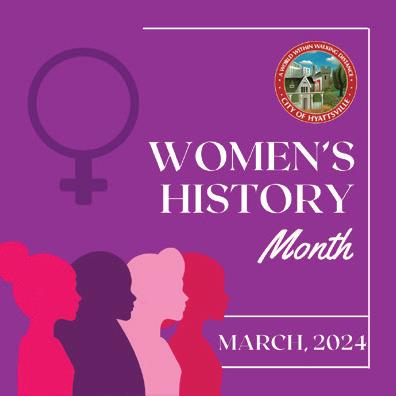
WEDNESDAYS
Stay active and join us at the City Building for Wellness Wednesdays! Our SeniorFit+ seated exercise classes are from 10 – 11 AM, followed by Zumba from 4 – 5 PM. Classes are free! Details at hyattsville.org/wellness.
Join the City’s GARE team March 13 from 6 – 8 PM via Zoom to review data and follow up on issues in the Queens Chapel Town Center & Univ. Park Town Center Areas. Learn more at hyattsville.org/calendar.
Hyattsville’s Seniors on the Go are visiting the Walmart & Amish Market in Laurel March 14 from 9 AM - 2 PM! Register by calling (301) 9855000 or emailing seniors@ hyattsville.org.
FREE NARCAN trainings at the City Building March 14 at 6 PM and March 15 at 10 AM. Register at hyattsville.org/ calendar.
Join Ward 5 Councilmembers Joseph Solomon & Rommel Sandino for a community meeting March 14, 7 PM, at Trinity Grill restaurant. Food to be provided. Details at hyattsville.org/calendar.
Enjoy a Friday night out on March 15 by dropping off your little one(s) at the Driskell Park Rec Center from 6 - 9 PM for a grand time! hyattsville.org/nightowls.
Volunteers are needed to help remove invasive species from Melrose Park between 10 AM - 2 PM on March 16! RVSP with environment@ hyattsville.org.
Join us March 18, 11 AM – 1 PM at the City Building for a free workshop on demystifying long-term care coverage. Space is limited. Call (301) 985-5000 or email seniors@ hyattsville.org to register.
Learn how to walk your dog like a pro on March 18, 23:30 PM, at Heurich Dog Park. Space is limited; register at hyattsville.org/calendar.
Free produce distribution March 19 at the First United Methodist Church, starting at noon.
The next Community Emergency Response Team (CERT) organization meeting is on March 20, 6:30 - 8:30 PM, at the City Building. Anyone is welcome. Register at hyattsville.org/cert.
A FREE diapers distribution will take place March 22, starting at 10 AM, at the City Building. No registration is required, but (1) proof of the child’s date of birth is required. Details at hyattsville.org/calendar
The City is organizing a Bulk Waste Pop-Up, E-Recycling & Paint Collection Day March 23 at 4633 Arundel Place, from 10 a.m. – 1 p.m., or until containers reach capacity. Learn more at hyattsville.org/ calendar.
HVL in Bloom is on March 23, from 10 AM to noon at Driskell Park. Join us for music, spring activities, and an appearance from a VIB (Very Important Bunny). Learn more at hyattsville. org/bloom.
A work budget session for departmental presentations and the introduction of the FY25 budget will take place March 27 at 7 PM via Zoom. Agenda & presentations will be available on hyattsville. org/meetings.
Join HPD for a cup of coffee on March 29, from 8:30 - 10 AM at Vigilante Coffee. No agenda needed!
¡Manténgase activo y únase a nosotros los miércoles en el Edificio Municipal para su bienestar! Nuestras clases de ejercicios sentados SeniorFit+ son de 10 a 11 AM, seguido por Zumba de 4 a 5 PM ¡Las clases son gratuitas! Más información en hyattsville.org/wellness.
Únase al equipo GARE de la Ciudad el 13 de marzo de 6 - 8 PM. a través de Zoom para revisar datos y dar seguimiento a los problemas en las zonas de Queens Chapel Town Center & University Town Center. Detalles en hyattsville.org/calendar.
Los adultos mayores de Hyattsville están vistando al Walmart y mercado Amish en Laurel el 14 de marzo entre las 9 AM - 2 PM. Registresé llamando al (301) 985-5000 o enviando un email a seniors@ hyattsville.org.
City Council will host a virtual Public Hearing on April 1 at 6 PM to hear from the community on three (3) proposed amendments to the City Charter. These amendments include modernizing the Charter’s Gender Equality Provision and implementing gender-neutral language throughout, updating the procurement process, and clarifying Council meeting start times. To view the proposed amendments and register to attend the meeting, please visit hyattsville.org/calendar.
Entrenamientos gratis para el usar NARCAN tomarán plazo el 14 de marzo, 6 PM y el 15 de marzo, 10 AM, en el Edificio Municipal. Regístrese en hyattsville.org/calendar.
Únase a los Concejales del Distrito 5, Joseph Solomon y Rommel Sandino, para una reunión comunitaria el 14 de marzo a las 7 PM en el restaurante Trinity Grill. Se proporcionará comida. hyattsville.org/calendar.
BÚHOS NOCTURNOS
¡Disfrute de un viernes el 15 de marzo dejando a su(s) pequeño(s) en el Centro de Driskell Park de 6 - 9 PM! Hyattsville.org/nightowls.
REMOVIMIENTO DE PLANTAS INVASORAS
¡Se necesitan voluntarios para ayudar a eliminar especies invasoras de Melrose Park de 10 AM a 2 PM el 16 de marzo! Reserve su espacio con environment@hyattsville.org.
TALLER Y ALMUERZO
Únase a nosotros el 18 de marzo de 11 AM - 1 PM en el Edificio Municipal para un taller sobre el seguro medicó a largo plazo. Espacio limitado. Llame al (301) 985-5000 o envíe email a seniors@hyattsville. org para registrarse.
ENTRENAMIENTO PARA PERROS
Aprenda a pasear a su perro como un profesional el 18 de marzo de 2 - 3:30 PM en Heurich Park El espacio es limitado; hyattsville.org/calendar.
ALIMENTOS GRATIS
La próxima distribución de productos agrícolas es el 19 de marzo en la Primera Iglesia Metodista Unida Iglesia, a partir del mediodía.
EQUIPO CERT
La próxima reunión de organización del Equipo de Respuesta a Emergencias Comunitarias es el 20 de marzo, 6:30 - 8:30 PM, en el Edificio Municipal. Cualquiera puede asistir. hyattsville.org/cert.
PAÑALES GRATIS
La distribución de pañales es el 22 de marzo, 10 AM, en el Edificio Municipal. No se requiere registro, pero se requiere (1) prueba de la fecha de nacimiento del menor. hyattsville.org/ calendar.
La Ciudad está organizando un Día emergente de recolección desechos grandes, electrónicos y pintura enlatada el 23 de marzo en 4633 Arundel Place, de 10 AM a 1 PM, o hasta que los contenedores alcancen su capacidad. hyattsville.org/calendar.
¡HVL in Bloom es el 23 de marzo, de 10 AM a mediodía en Driskell Park! Únase a nosotros para escuchar música, actividades de primavera y la aparición de un conejito. Obtenga más información en hyattsville.org/bloom.
El 27 de marzo a las 7 PM se llevará a cabo una sesión de presupuesto virtual para presentaciones departamentales y la introducción del presupuesto del año fiscal 2025. La agenda y las presentaciones estarán disponibles en hyattsville. org/meetings.
Únase al HPD para tomar una taza de café el 29 de marzo, de 8:30 - 10 AM en Vigilante Coffee. ¡No se necesita agenda!
El Concejo Municipal organizará una audiencia pública virtual el 1 de abril a las 6 PM para escuchar a la comunidad sobre tres (3) enmiendas propuestas para la Ciudad. Estas enmiendas incluyen la modernización de la disposición sobre igualdad de género de la carta y la implementación de un lenguaje neutral en cuanto al género, la actualización del proceso de adquisiciones y la aclaración de los horarios de inicio de las reuniones del consejo. Para ver las enmiendas propuestas y registrarse para asistir a la reunión, visite hyattsville.org/calendar

The City hosted a delegation of inspiring women leaders from across Latin America as part of the U.S. Department of State’s International Visitor Leadership Program in early March. Women from the City’s staff and local partners shared stories of
and strategies for standing up to make a change in your community.
La Ciudad recibió a una delegación de mujeres líderes inspiradoras de toda América Latina como parte del Programa de Liderazgo para Visitantes Internacionales del Departamento de Estados Unidos a principios de marzo. Mujeres del personal de la Ciudad y socios locales compartieron historias de perseverancia y estrategias para levantarse y lograr un cambio en su comunidad.






It’s barely past snow season, and already stores are stocking displays of sunscreen and sandals for the big March event — Spring Break. But for those of us not so fortunate to be traveling anywhere exotic anytime soon, not to worry: We can experience our own European vacation without leaving our own backyards and local parks.
On a warm day in March, you can step out along neighborhood sidewalks and find early spring flowers nestled in the grass everywhere. And not just ornamentals from the nursery trade, but showy yellow dandelions, bright purple henbit and deadnettle, deep blue ground ivy and sky-blue speedwell. Some have even been blooming off and on during warm spells since Thanksgiving. What do all these festive spring blossoms have in common?
They are invasive European weeds. You could just as easily be standing on a sidewalk or park trail in Vienna, Paris or London.
Most of our native wildflowers are not foolish enough to bloom this early in the season, when cold snaps and ice storms are still a distinct possibility. And many native plants need native bees, most of which are still hibernating in March, to pollinate them.
While these European plants are weeds to us, they are as welcome in the Old World as trilliums and phloxes and


spring beauties are here. But once they reached American shores, many of these plants settled in so well they became insidious infiltrators of our lawns and gardens.
Because they come from generally milder climates, these plants are programmed to bloom during warm winter spells — spells when our native plants are mostly dormant. And they don’t even need to depend on native bees for pollination; luckily for them, another European import stands ready to assist — the western honey bee (Apis mellifera), which is active during warm winter weather.
So let’s go European sightseeing in the neighborhood.
Dandelion (Taraxacum officinale) is easily the most familiar of the European imports. It’s a
While these European plants are weeds to us, they are as welcome in the Old World as trilliums and phloxes and spring beauties are here.
aboard the Mayflower had dandelion seeds with them. Every part of a dandelion plant is edible, from the toothed leaves for salad to the thick rootstock, which can be made into a coffee-like brew to promote urine flow.
voring ales.
Ground ivy also made a passable substitute for rennet in cheesemaking and was esteemed for thousands of years in folk medicine for treating a variety of illnesses. These domestic uses led to ground ivy’s intentional introduction to American shores. The dark blue flowers are born in pairs along the vining stem, and like the dandelion, it’s a hardy perennial.
Two look-alike annual mints also make the list of European vagrants: henbit (Lamium amplixcaule) and purple deadnettle (Lamium purpureum). Both sport reddish-purple single flowers, usually clustered toward the top of the stem, and they often grow together in lawns and along roadways. Henbit’s stem leaves have no stalk and encircle the stem; in deadnettle, the lower leaves are always on individual, distinct stalks. Both plants grow more or less upright instead of vining or twining, which helps distinguish them from ground ivy, which is also a mint.
The two Lamiums are annuals that germinate in the fall and die by summer; it’s easy to spot the dark green leaves of their overwintering rosettes throughout the cold months. These leaves are superficially similar to the leaves of stinging nettle (Urticaria), but they don’t
If you were a Saxon brewer, you’d know our next aromatic migrant well: ground ivy (Glechoma hederacea). But you’d probably have known it by its other common name of alehoof, so named for its use in fla- SEE
perennial, meaning individual plants survive year after year, and has the distinction of being intentionally introduced to North America — colonists



























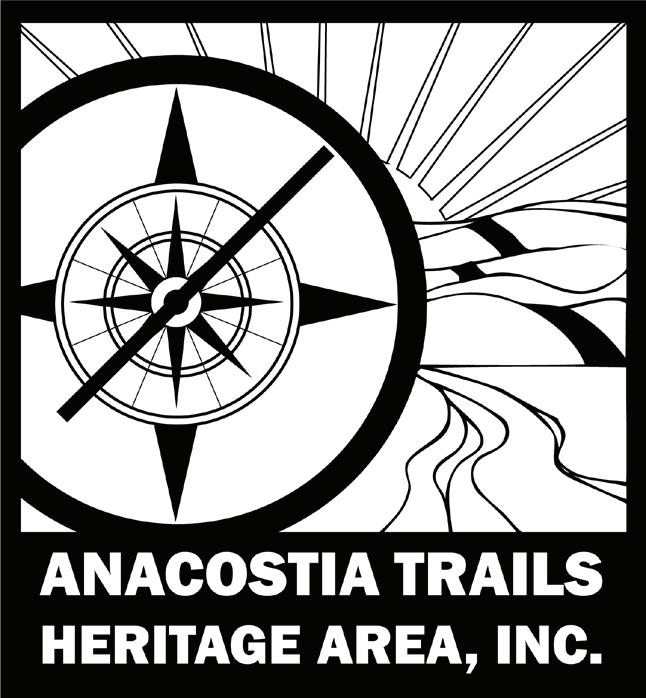
Dear Miss Floribunda,
I have just finished reading Bringing Nature Home: How Native Plants Sustain Wildlife in Our Gardens by Douglas Tallamy, and I am so fired up my kids are calling me “The Green Panther.” I have decided to get rid of my alien species plants and replace them with native plants this spring. Because you have supported pollinatorfriendly gardens in the past, I’m wondering if you can tell me where to find native plants, preferably locally, or some online company that is reliable. Perhaps your cousin Parsimony can tell me how to grow native plants from seed because I am on a budget. Also, is it too late to start the seeds indoors? How difficult is it? I usually start my tomato plants from seed, but I’ve heard that starting most natives can be tricky. Would you or Parsimony provide some guidelines?
Green Panther on Gallatin Street
Dear Green Panther,
First of all, let me say how delighted I am that you are joining such an ecologically important trend among home gardeners. Though you are poised to pounce, I might caution you to spare those aliens that are not invasive. Research them individually to


see if they feed or harbor any beneficial insects or birds before eradicating them, and consider the architecture of your garden if they are shrubs or perennials. Not many native plants have long blooming seasons, and it will take a while to establish a plan in which different plants flower seamlessly in succession. You do need expert advice before doing anything drastic.
Although neither my cousin Parsimony nor I is sufficiently competent to teach you, the Hyattsville Horticultural Society has invited an expert, David Roeder, to conduct a native plant home propagation workshop on Saturday, March 16 at the Hyattsville Municipal Center, 4310 Gallatin Street.
Mr. Roeder has spent years volunteering at Chesapeake Natives (chesapeakenatives. org), a highly regarded native plant and wildflower nursery, and was leader of the seed propagation program there for an extended period of time. He has also propagated thousands of native plants from seed at his own home. He currently volunteers as a habitat advisor for the Audubon Society.
Because it is indeed more difficult to grow native plants from seed than it is to grow tomatoes or other vegetables, he will inform you which seeds require cold treatment before planting, and demonstrate the scarification — scraping or nicking — that speeds germination when a seed coating is very hard. He will give you guidance also on how to collect seeds directly from native plants.
You are correct that it is much more cost effective to plant from seed than it is to buy plugs or, especially, large established plants. Native plants grow very densely in the wild, and you need to plant more than just a few to approximate their beauty. Mr. Roeder will let you know what to expect from different native plants, most of which are perennial and somewhat slow to establish. They also need more care at their early stages than the plants you are probably accustomed to growing. In addition to showing you how to begin planting indoors, he will demonstrate how to start plants in outdoor containers as well.
At the March 16 meeting, Mr. Roeder will provide a slide presentation and a light setup to accompany an explanation of the various lighting options available. Samples of suitable seedling containers are also part of the demonstration. Informational handouts and other freebies will be provided, including — best of all — native seeds already cold-treated and ready to plant!
I might mention that there will also be coffee and light refreshments. You will meet other gardeners who share your concern for the environment and for the beautification of our community. Miss Floribunda

about gardening for the
& Times. You may email her at Floribundav@
students from a new CERT team being developed in Hyattsville. C. Reginald “Reggie” Bagley, Hyattsville’s emergency operations manager, said, “Hyattsville had a CERT team several years ago, but it became inactive. We’re reinvigorating it because there were people in the community who expressed an interest, which has only grown since the recent flooding incidents and the train derailment.”
CERT teams have a semi-official status that is different from Red Cross or Boy Scout volunteers. Under Federal Emergency Management Agency (FEMA) and OEM rules, Hyattsville’s CERT team must be chartered by the city council, who would then provide insurance and possibly some funding and equipment, such as radios.
“Next year I hope to ask for $5,000, which would be a reasonable minimum to equip a team for a town this size,” Bagley said. “However, I don’t want to start applying for a charter until I have 20 people who have been willing to commit a weekend to completing the basic training.
Right now, I have about 12.”
When the class introduced itself, Taylor explained that she had some first-aid training because she was a veteran of the Marine Corps, and that joining CERT was another way to help and protect her community. This response was pretty typical. Though a knowledge of emergency procedures isn’t required to join, most of the dozen or so CERT volunteers had some prior training. There was also a nurse, and another Hyattsville volunteer, Tommy Fox, reported that he received fire and first-aid training working as a safety officer in an industrial plant.
All of the instructors were former military personnel, professional EMTs, or both. One had participated in the search and rescue after the 1995 bombing of the Murrow Federal Building, in Oklahoma City, and another had been deployed from Maryland to search through the rubble of the World Trade Center after 9/11.
In 1985, the Los Angeles Fire Department took lessons learned from earthquake responses in Japan and Mexico and developed a program to train a group of community members in basic fire suppression, first-aid, search, and evacuation techniques. After the Oct. 1, 1987, Whittier Narrows earthquake shook much of Southern California, California officials moved to expand CERT training. In 1993, FEMA began spreading the
CERT concept nationwide.
After the 9/11 attacks on the Pentagon and World Trade Center, CERT training and funding were greatly expanded through the U.S. Department of Homeland Security.
Graduates receive a green backpack containing helmets, reflective vests and other protective gear, along with first-aid and emergency supplies. In addition to hands-on practice in search and rescue and using fire extinguishers, graduates learn CERT’s priorities and how the Incident Command System (ICS) operates.
“We’ve all been taught that the first thing to do is call 911 for help,” explained Rasheed Plummer, the OEM’s community outreach coordinator. “One thing CERT does is prepare people for when the police and firefighters can’t get there. In that case, the priority is making sure you and your family are safe, then checking on your neighbors.”
CERT volunteers work within the ICS, a formal structure that coordinates local, state and federal responders during a natural disaster or other emergency. The ICS provides a clear framework for different agencies to work together as part of a single chain of command for their response.
“I didn’t learn anything new about first aid,” said Green a few days later, “but this was the first time I ever thought about crawling through rubble like you see in Gaza. For me, the most important lesson was understanding the ICS. This is why I urge everyone with medical skills to get their CERT certificate.”
According to Green, in a chaotic emergency, if you just drive up and say, “I’m a doctor, or nurse or CNA [certified nursing assistant],” you run a good chance of being marginalized because you’re outside the chain of command. “But,” she said, “if you’re on a CERT team, you can use your skills in an organized way.”
Bagley concurs with Green’s assessment of how CERT can amplify community efforts.
“During the height of the COVID epidemic, when Hyattsville was running our vaccination and testing clinics, we had a huge traffic jam at every site,” Bagley said. “But we didn’t want to pull the medical personnel off their duties to direct traffic. CERT would have been perfect for that. And when the nurses and others were working for endless hours straight with long lines of people waiting for shots, it would have been great to have a group you could depend upon to go out and get them something to eat.”
For information about free first-aid training, visit bit.ly/OHSCPR1stAid.








number is only a slight increase from the current fiscal year’s budget of $2.811 billion.
The board unanimously approved the proposed budget toward the end of the meeting.
Hyattsville parent Patrick Paschall, who spoke during the public comment period, accused the board of sweeping the transportation issues under the rug, despite — Paschall stated — his family submitting dozens of complaints and receiving no meaningful response for months.
“My son’s bus has gotten him to school 30 minutes or more late every day for over 100 days,” Paschall said. “That’s totaling more than 50 hours of missed instruction for him and his classmates.”
With late or missing buses, more students are arriving in cars, which causes its own problems.
“It’s very, very, very congested,” Rayne Rivera-Forbes, the student member of the school board, said about the morning traffic. “And I’m sure many parents and members on their way to work can agree that it is hard to get through traffic.”
“My son’s bus has gotten him to school 30 minutes or more late every day for over 100 days. That’s totaling more than 50 hours of missed instruction for him and his classmates.”
Patrick Paschall Hyattsville parent
Rivera-Forbes, who was elected by the Prince George’s Regional Association of Student Governments, said that although she and her brother attend two different PGCPS schools that are right next to each other, they do not arrive at their respective schools at the same time.
The audit suggests carpool apps for schools where “parent car traffic has become a burden on school curbside operations or to local neighborhoods.”
House commissioned the district’s bus system audit, which began in September 2023. PGCPS Chief Operating Officer Charoscar Coleman and Director of Transportation Keba Baldwin presented the audit’s findings and recommendations during the meeting.
“As Superintendent House just outlined, his 90-day plan acknowledged that our school district has faced persistent challenges in the area of student transportation,” Coleman said.
Key findings of the audit included a high number of trips that are not assigned to specific vehicles, too many schools with the earliest start time — 7:45 a.m. — and unfilled seats, as well as understaffed buses.
The audit recommends




moving many school start times later, so that more buses can drop off one group of kids and go back and pick up another set. According to the audit, this could eliminate up to 119 buses and save $16.9 million annually.
Other recommendations included making distances between bus stops and homes longer for older children and implementing a codified optout policy for students who do not wish to use the buses.
Rivera-Forbes said she was glad to see the district working to solve its transportation troubles.
“I got to speak with the auditors, so that was an amazing experience for me, alongside other students,” Rivera-Forbes said after the audit presentation. “And I’m happy to see that a lot of the advice we were giving, the recommendations we were giving as students, were taken into consideration and prioritized.”
School board member Pamela Boozer-Strother (District 3), whose district includes Hyattsville, said this is not the first time the school district has analyzed busing problems and found that staggering school start times would help.
“I have compared this to the December 21, 2011, audit,
and let’s be honest, we’ve been talking about the bell times in many task forces on transportation for years,” Boozer-Strother said in the meeting. “This district has been unwilling to change them because every school community has a reason why they think their bell time shouldn’t change.”
The idea behind staggered bell schedules is that the same drivers could drop off one busload of students at one school and then pick up another load for a different school, thus preventing an influx of traffic.
Boozer-Strother also said that the board’s vision was to better spend the money allocated for student transportation rather than to save money on transportation.
The proposed county schools budget spending plan calls for a slight decrease in transportation spending from FY 2024 to FY 2025, from $145 million to $140 million. The budget would slightly reduce the number of drivers, and slightly increase the number of dispatchers and those in support roles.
Jess Daninhirsch is an undergraduate journalism major at the Universityof Maryland.




The Luminis Health Weight Loss and Metabolic Surgery team is ready to help you reach your goals. From your first consultation to keeping the weight off after surgery, our team will support you.
Our services include:
• Nutritional counseling
• Physical therapy
• Support groups
• Body contouring
• Leading technology
• Financial navigation
“
My surgery was a huge success and the results were amazing! I have never felt healthier in my life! – James
“ I no longer have hypertension, sleep apnea, brain fog, elevated blood sugars or joint pain. – Malkia ” ”
Visit Luminis.Health/WeightLossSurgery to sign up for a free webinar in just a few minutes.
To make an appointment by phone, please call 443-481-6699 for all locations. Annapolis | Lanham | Easton
Additionally, artificial turf provides an outlet to recycle old tires with the crumb rubber infill below the green carpet. According to a 2008 Environmental Health Perspectives article, onetwelfth of the 300 million tires withdrawn from use each year are recycled this way; the average soccer field holds around 4 to 15 pounds of recycled infill per square foot. When Keystone removes turf fields, Fitzgerald said, 90% of the crumb rubber infill is removed and recycled, while the old carpet is usually donated to Society for the Prevention of Cruelty to Animals shelters.
However, some residents have expressed concerns about the potential chemical exposure from such recycled crumb rubber infill. “If tires can’t go into landfills because they release toxic chemicals, why are we using them in schools?”
Hyattsville resident Nicola Wood asked in an email. “I guess it solves a problem of where to put all those used tires, and it makes money for some companies. But it is making us sick.”
Because many of these fields have no drainage to capture runoff, a lot of the debris can end up in waterways. Artificial turf fibers can make up 15% of the mesoplastics and macroplastics contributing to plastic pollution in waterways, according to a 2023 Environmental Pollution study.
Then there is the issue of what happens with artificial fields when they’ve worn out.
Keystone Sports notes that the usual lifespan of a synthetic turf field is between eight to 10 years. A synthetic turf plastic carpet contains around 40,000 pounds of plastic carpeting and 40,000 pounds of infill, according to the Sierra Club, some of which will eventually end up in landfills.
Playing on turf may also result in more injuries than playing on grass fields. A 2018 American Journal of Sports Medicine study found that some types of injuries are 16% more likely to occur from playing on artificial turf compared to on grass. After New York Jets quarterback Aaron Rodgers’ achilles ruptured, causing a 2023 season-ending injury, the National Football League Players Association called for natural grass in all stadiums, according to ESPN.
During a Maryland Board of Public Works meeting this past October, Maryland Comptroller Brooke Lierman spoke out against artificial turf. “Synthetic turf fields have a large carbon footprint, and their toxic substances end up as ‘forever
waste,’” she said. “These plastic carpets emit greenhouse gases, like ethylene and methane, continuously throughout their lifespan, and that doesn’t count the phenomenal amount of greenhouse gases that go into the production of the products in the fields in the first place.”
Recently a bill for custody on artificial turf passed the Maryland House of Delegates and is headed to the state senate. This bill would require the Maryland Department of the Environment (MDE) to track the chain of custody of all synthetic sports and playing fields installed in the state. This has a very low ticket cost for MDE, is an environmentally sensible bill, and protects water quality, according to Diana Conway, founder of Safe and Healthy Playing Fields.
The bill’s fiscal note calculates that it would cost the MDE approximately $59,000 in fiscal year 2025.
“Artificial turf is not the winwin solution that many prior park directors believed it would be,” Lierman said. “Its costs are being borne now by those playing on these fields and being injured or suffering staph infections, and will be borne by future governments who have to pay the incredible cost of disposing of the fields before replacement.”
Lillian Howard is an undergraduate journalism major at the University of Maryland.

FROM PAGE 2
microphones could be set up? Those who can’t attend in person can submit their comments ahead of time and watch them read aloud. This is hardly different from speaking unseen to a computer before disappearing for the rest of the meeting. The intricacy of built-in microphones and cameras from the council chambers might be difficult to replicate, but surely someone on the city payroll with the technical chops can find a large enough room to rig the AV setup required for such a feat. Or, the city could simply adopt Laurel’s method of rotating between virtual and inperson meetings. Measures like this would suffice until the council chambers can be completed, or until a date for that completion can be given.
It’s important for politicians and their constituents to be present in the same room, feel that responsibility to one another, share something — even if it’s just the same exit or a “Bless you” following a sneeze — to ensure that one is not above the other, that no one is separate and untouchable.
I recently watched a video of that last in-person city council meeting, from March 2020. Maybe it was the dramatic irony of the Purell being passed around between comments, or the foreknowledge of the years of isolation and tragedy that
would ensue. But something about the meeting struck me as incredibly human. Mayor Candace Hollingsworth called music teacher Nevilla Ottley to the dais to praise her for 32 years of service, hugging her twice in the process. Councilmembers and citizens mired themselves in a lively, often comical, discussion about legalizing backyard chickens. A resident named Marshall requested that African American men be included on the Race and Equity Task Force and remarked on the class differences between East and West Hyattsville. It was beautiful. Yet I couldn’t help noticing that over half the city councilmembers from that meeting have now been replaced. Which means seven out of 10 sitting Hyattsville councilmembers have never experienced an in-person city council meeting. Is this, then, a transitional generation, ushering us into an era of purely virtual government? Or is it merely a matter of newer councilmembers needing to experience that atmosphere once or twice in order to understand its importance? The nature of frontiers is that lines of demarcation are difficult to draw. But the line must be drawn somewhere.
 Griffin Limerick is the managing editor of the Life & Times
Griffin Limerick is the managing editor of the Life & Times
FROM PAGE 7
have stinging hairs, hence the common name dead nettle.
Perhaps the most exotic stop on our European tour is, as its name implies, more accurately considered Eurasian. Persian speedwell (Veronica persica) was well known to ancient Asian and Middle Eastern apothecaries and flourished in medieval European herb gardens before it escaped into the wild. Unlike the flat flowers of dandelion or the tubular flowers of the three mints, Persian speedwell has an open, sky-blue flower with darker blue lines against a lightblue base color. Another annual, its seeds germinate in the fall, and its tough, light-green leaves persist all winter. We have native speedwells, too, but Persian speedwell is far more common today.
Like all spring breaks, our European tour doesn’t last long — all of these invasive flowers are finished by the time our hot summer weather sets in. But for that brief window in March and April, you’ll be forgiven for humming “April in Paris.”

Have questions for Rick about the world of nature in and around the city, or suggestions for future “Re-wilding Route 1” columns? Drop him a note at rborchelt@gmail.com.



For decades, Prince George’s County taxpayers have prioritized children by setting aside revenues to supplement state and county contributions to Prince George’s County Public Schools (PGCPS), including overwhelming support for a casino revenue lockbox for education.
Now, two last-minute bills — HB 396 and HB 398 — would ignore the will of Prince Georgians and redirect other revenue currently locked for education, putting more than $60 million in critical funding for PGCPS at risk. Instead of unlocking our students’ potential, politicians want to unlock the funding they need to succeed.
PGCPS students got a brief reprieve when the Prince George’s County House Delegation held both bills at its Feb. 9 meeting. In the days prior, we spoke with a growing number of legislators who shared our concern and expressed their opposition. And the more fellow parents become aware of these bills, the more outraged they become. We urge the delegation to make this hold permanent, rip up both bills, and not make a decadeslong underfunding crisis even worse.
This mindset of kicking tough choices down the road — and taking from PGCPS hoping no one will notice — is not new. It’s exactly how we got into our current underfunded mess of emergency school
building closures and resource shortages in the first place. Both bills are full of misleading smoke and mirrors language, but their impact is clear: Politicians want to take from our already underfunded schools and balance the budget on the backs of our kids.
County Executive Angela Alsobrooks and others should know better. It was Alsobrooks, in 2018, who named widely respected education leader Dr. Alvin Thornton to serve as Board of Education chair. Twenty years before the Blueprint for Maryland’s Future, Thornton laid the foundation by leading a groundbreaking statewide commission on equitable school funding. The Thornton Commission was making progress until the Great Recession of 2007-2009, when politicians made massive cuts that have impacted us ever since. We cannot afford the same mistake and reversal of progress again.
In appointing Thornton, Alsobrooks said, “At a time when we are getting ready to go to Annapolis to seek the necessary funding we need to support a school system that educates students who face numerous challenges outside the classroom, his expertise will help to make certain that we receive every dollar that our children deserve.”
Those words ring true today, as current
parents continue to see the everyday impacts of underfunding. Some examples: Schools being forced to choose between hiring a resource teacher for math or for reading. Limited funding for special education teacher aides. Dilapidated buildings with exposed mold, asbestos and sewage leaking into classrooms due to an $8.5 billion maintenance and construction backlog.
We greatly appreciate the funding Annapolis has invested in PGCPS, including critical money for much-needed school construction and implementation of the Blueprint for Maryland’s Future. The Blueprint is living up to its promise to equitably fund a world-class education system with universal all-day pre-K for 4-year-olds, college and career readiness standards, expanded career technical education programs, and funds to pay our educators professional salaries. Each new Blueprint dollar means new expenses for those programs. It does not create a piggy bank to relieve local politicians of their own responsibility to fully fund other expenses in our schools.
We acknowledge Prince George’s County and the state both face deficits, but budgets are statements of priorities — and properly investing in education is non-negotiable. “Fully funded” can no longer mean simply matching the


inadequate budgets of years past. It must mean finally giving our students and schools the resources they need to succeed.
This investment in our students is well worth it. PGCPS is making some of the most significant progress in Maryland. From academic achievement to climate change action to innovative school construction, PGCPS is an education leader making all this progress despite being chronically underfunded. Imagine what we could do with the proper resources our students deserve.
We stand with the Prince George’s County Board of Education and thank them for working together to fight for our children on this issue. We invite other parents to join us and unequivocally say: No cuts to education.
And we strongly urge County Executive Alsobrooks and state legislators to pull these badly flawed bills, start over, and work to identify other sources of revenue. Our schools are already underfunded, and balancing the budget on the backs of our kids is a non-starter.
This commentary has been reprinted from Maryland Matters and has been signed by dozens of parents of Prince George’s County Public Schools students. Visit tinyurl. com/4e9eczfk for the full list of names.

